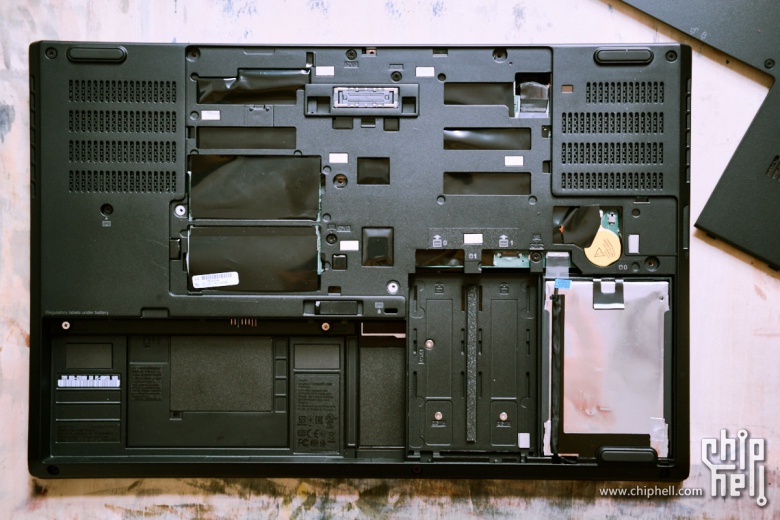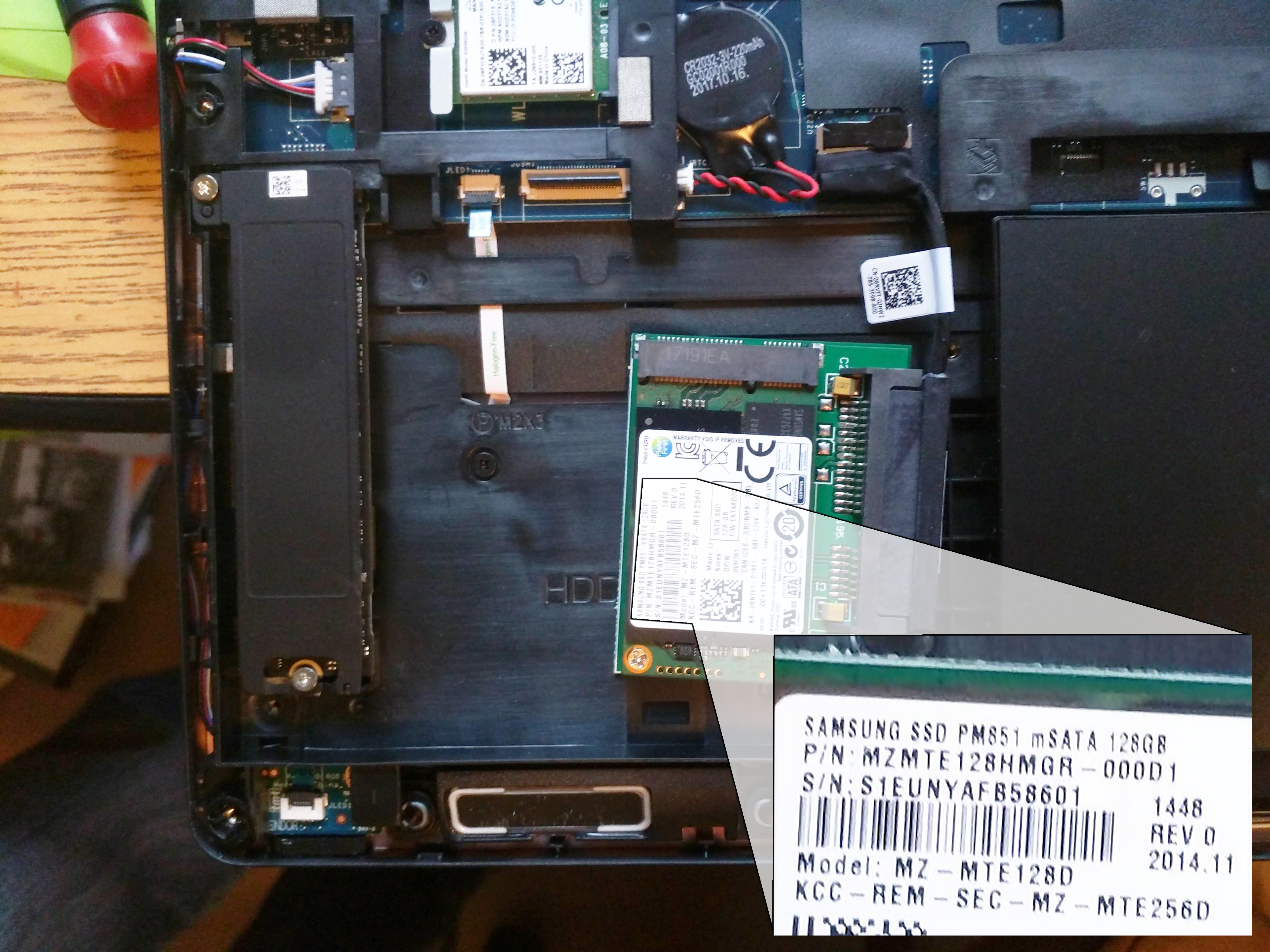M.2 Ssd In Wwan Slot
I have new Dell Latitude 7480 laptop with one primary m.2 sata SSD disk, and one free m.2 slot, where normally the WWAN or LTE card would be: Can I use this free slot to add a second SSD disk? Dimensionally, m.2 42mm would fit, but would it also actually work? I have tried to use the PLEXTOR M.2 ngff 128G SSD, can installed in the WWAN slot, but the bios and OS can not recognized this SSD, maybe some settings is wrong with the bios, or maybe this WWAN slot completely do not support M.2. Ngff SSD, just for WWAN device, so, the problem is because slot not support? Or bios problem? Or Z3795 not support.
1
This model has room for two possible drives.
(1) 2.5' bay caddy attached with NVMe extension cable circuit board to connect a 2280 SSD. I selected this option for the inclusion of that component which would otherwise have to be ordered separately if buying a traditional hard disk first. I will backup the drive image and restore to a larger SSD model.
(2) WWAN slot for a 2242 NVMe SSD. Lenovo only offered 128GB model for that slot, so I left it blank with intention to source for another SSD later.
And regarding the above point, I'm having a tough time locating any shop that even sells a 2242 NVMe SSD. All the rage is 2280, it seems. Can't find any good offerings on Amazon or Newegg either; practically are available 2242 models are SATA-based, rather than the NVMe the slot demands.
An ideal candidate I've seen is Western Digital PC SN520 but that apparently has sold out or only available through obscure channels. The only dedicated NVMe models widely available are China brands like KingSpec and Netac. They don't have enough mainstream popularity for people to actually buy and review them; so it's a long throw to guess their performance and durability.
Anybody else operating 'niche' hardware that call for the smaller 2242, 2230 form factors?
The melody of logic will always play out the truth.
~ Narumi Ayumu, Sprial
Recently while trying to answer this myself, I found a lot of discussion on this subject, but no definitive answer.
M.2 B Key sockets have a variety of possible modes as defined by the NGFF specification:
The second to last mode “RFU” (Reserved for future use) is defined by Dell as:

I am unsure what HCA stands for, but have seen it printed on the silkscreen of some of my earlier latitude models. Clearly it is some kind of proprietary device that requires one PCIe lane. It may stand for Host Channel Adapter – Implying some kind of non-NVMe PCIe SSD (i.e. has an Option ROM).


None of this tell us anything about what Dell have actually implemented on thier WWAN slots, neither does their tech support, or any of their documentation. I found myself eyeballing the traces extending from the socket, but even this was inconclusive as a lot of them are fed up from vias under the socket.
It’s given that it’ll have SSIC/USB 2.0 because almost all WWAN cards use those interfaces, but what of the others?

Fortunately there’s no need for any further conjecture because the schematics for these models are floating around the internet, so let’s answer that question definitely.
The above diagram covers models 7280, 7380, 7480, 7490 and likely others too. So there we have it. The interfaces on the WWAN socket are:
M.2 Ssd In Wwan Slot Extruded
- USB 2.0
- SSIC (Chip-to-Chip USB 3.0)
- PCIe (Permanently disabled in BIOS)
No SATA.
But…
Just because we know what interfaces are there, we still don’t know what kind of peripherals will actually work. For example – if a socket can accept WWAN-PCIe – SSD-PCIe should also be no problem as the required connections are all there, however those devices will have their configuration pins tied differently, allowing the BIOS to determine exactly what’s attached.
This allows manufacturers (for example) to allow PCIe WWAN cards, but disallow PCIe SSDs. On top of that, just because an interface is there, it doesn’t mean that it’s actually enabled.
This turns out this is the case for my Dell Latitude. While the PCIe is there, it cannot be used because the port on the root complex is disabled in the BIOS, and there’s no way to enable it (without hacking the BIOS). I was able to confirm this by testing out a variety of B-Key PCIe devices, none of which were detected (even when strapped as WWAN-PCIe).
M.2 Ssd In Wwan Slot Adapter
A dick move by dell, but given how rare WWAN cards requiring PCIe are, they had no reason to enable it, and my experience from owning previous models is that they’re pretty good at tying up loose ends like this.
Short of hacking the BIOS, or building a new type of USB 3.0 card from scratch, only WWAN cards will work in the WWAN slot.
M.2 Ssd In Wwan Slot Software
Older Dell models did have SATA+PCIe in the WWAN socket, but this is not the case for more recent units. The story will inevitably be different for other manufacturers.